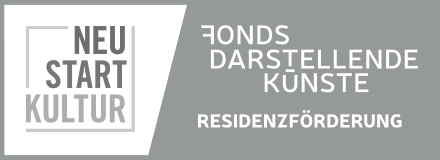
This is the week in which we want to be surprised, but we also want to surprise you. Although we are not making a performance, opening to visitors is always a thing of itself. We want to share the scores we had been developing with all their characters and specificities. It is not sharing of results, but sharing of performative constructs that if retold would lose their traction.
This is the week in which we created dark rooms and distributed light and projection beams.
While thinking of how to share our experience we realised how much duration has been a crucial part of it. Our initial desire for the last day is to open the space for three hours and just have open doors during the recording of several podcast formats. To let time pass while we are all sharing a space. To let our visitors hang out while the podcast is in recording.
As this turns out to be not a situation that can really be organised, we focus on squeezing the formats that allow in shorter slots. We wonder what that would mean for the encounter between our material and our guests.


Each of the podcast formats that we want to share is built on a certain tension between the way a theatre performance, on the one hand, and a podcast, on the other, communicate with their audience.
For each one we ask ourselves: What is visible? What is traceable? What is engaging? What creates sense and sensibility? Why are we interested in this exact crossing point between the two dispositives? For each one we have completely different answers.
While preparing for the Open Doors, we realise we are very much interested in displaying the crossing points by performing them and only after find ways to talk about them.
These constructs become like small scenes, some of them manage to reach the feeling of situations. We know they are still quite hermetic, but we believe our audience is there to support us in learning more. We want to know how things that do not belong to each other can still endure to be next to each other. We want to see how constructing non-belonging can trigger engagement or reflections.
There are some vague expectations that treating the audience in two ways simultaneously can create confusion. Then we still decide to go on with it as it is exactly this that we are doing. Placing things that do not belong to each other next to each other and waiting for them to fuse. We are planting con-fus-ions.
In the 50 minutes of our tryouts we play wall tennis with our mirror images, we rearrange the stage for the different formats, we change the topics abruptly, we make a patchwork of communication rhythms between us and the audience, we invite our guests to choose a dark room. It is a long dramaturgy of sounds, sources of sounds, reasons to make sounds, reasons to pronounce words, reasons to produce sentences. On the spot. Nothing is scripted apart from the scores according to which all is happening.


It is also a short choreography of stage arrangements of visible and invisible presences, images that need attention, images that guide the understanding, images that distract the focus. A loudspeaker starts behaving ghostly for the first time in the three weeks we are spending in Ballhaus. After its insistence and with the help of Annika we tame it and continue.
The feedback session is heated not only because of the high degrees outside.
Con-fus-ion has managed to find its way. Non-belonging has managed to open insisting questions.

flausen+headquarters
Alexanderstraße 124
26121 Oldenburg
flausen+gGmbH
Klävemannstraße 16
26122 Oldenburg
Das überregionale Netzwerk flausen+ wird gefördert von der Beauftragten der Bundesregierung für Kultur und Medien über das Programm “Verbindungen fördern” des Bundesverbands Freie Darstellende Künste e.V.
Gefördert vom Fonds Darstellende Künste aus Mitteln der Beauftragten der Bundesregierung für Kultur und Medien im Rahmen von NEUSTART KULTUR.
Gefördert vom Fonds Darstellende Künste aus Mitteln der Beauftragten der Bundesregierung für Kultur und Medien.



